On this page
Latest updates
Giant hogweed
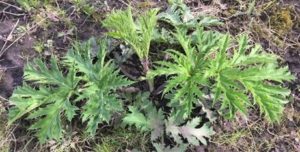
Giant hogweed is an invasive plant originally from Asia. Its sap is dangerous to the skin, causing inflammation, burns and possible blindness if it gets in your eyes. Do not touch.
- Tall, thick stem with reddish spots that stand 3 to 4.5 metres (10 to 15 feet) tall.
- Umbrella-shaped white flower head with a flat top.
- Often mistaken for Queen Anne’s lace, cow parsnip and angelica; giant hogweed is much larger.
How to remove giant hogweed from your property
The safest way to get rid of giant hogweed is to call a professional service. If you must remove it yourself:
- Wear protective clothing including gloves, pants, long sleeves, eye protection, raincoat, and boots.
- Remove flower heads to prevent seeds from growing
- Cut plant roots 3-5 inches below the soil.
- Seal it in two layers of plastic garbage bags and put it in your grey waste cart. Do not put it in your compost, green cart or bagged yard waste.
- Wash the clothes you wore during removal.
- Watch for any new growth and remove as needed.
- For more information visit the Invading Species giant hogweed page.
Dog-strangling vine
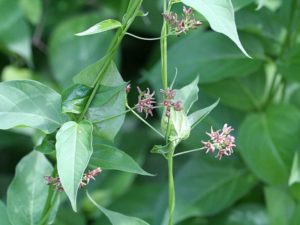
This invasive plant species smothers native plants and young trees which reduces habitat for birds, pollinators, and insects. It also increases wildlife grazing on native species.
- Grows one to two metres high, coiling around other plants and trees.
- In June, it has pink or purple star-shaped flowers with five petals bloom.
- In late summer, it has bean-shaped pods measuring 4 to 7 centimetres long; pods open to release feathery white seeds.
- Its leaves are shiny, yellow-green and dark green in the shape of ovals with a pointy tip.
How to remove dog-strangling vine from your property
- Cut at the base.
- Put it in the grey waste cart. Do not put it in your compost, green cart or bagged yard waste
- Do not let it flower or seed.
Japanese Knotweed
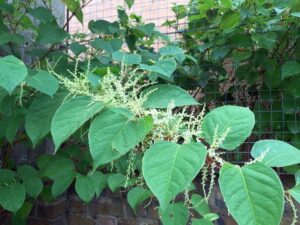
Japanese knotweed spreads quickly if not controlled, creating dense thickets that suppress native tree and shrub species. It can make riverbanks unstable and more vulnerable to erosion and flooding.
- It grows up to three metres high and its stems are round, hollow, reddish-purple, smooth and look a lot like bamboo.
- Leaves are teardrop shaped with pointed tips.
- Flowers are greenish white.
- Fruit is small and white with wings that help to disperse seeds to new sites and seeds are brown and shiny.
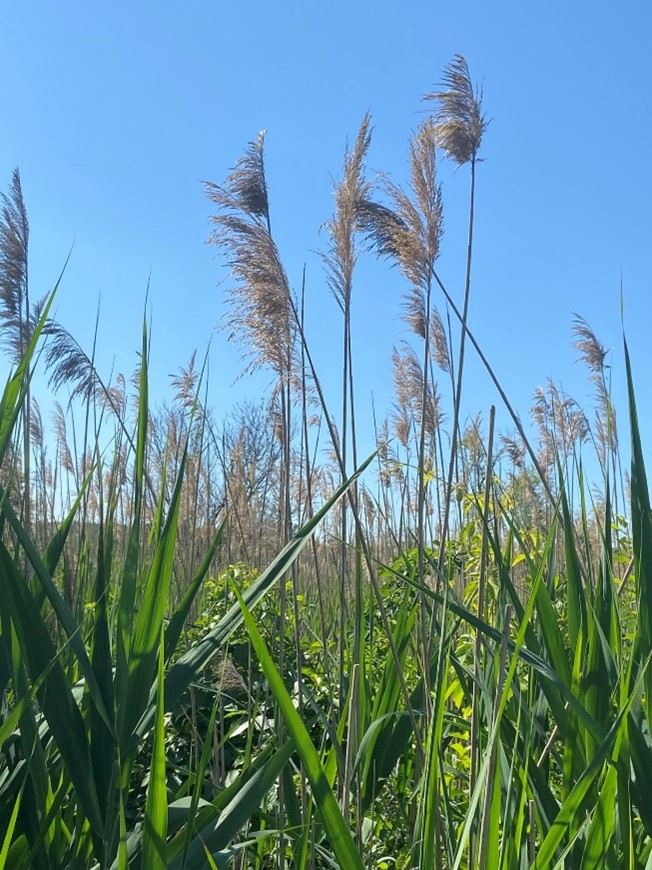
Phragmites Australis (European Common Reed)
Invasive Phragmites is an aggressive plant that spreads quickly and creates dense stands of reeds that crowd out native plant species. It usually invades areas with standing water year-round (ditches, wetlands, ponds).
Invasive Phragmites can lower water levels which impacts surrounding plants and animals. It can also interfere with stormwater infrastructure, cause road safety hazards and impact water related recreational activities.
Invasive phragmites
- It can grow up to 5 metres (15 feet),
- Grows in dense groups with no other plants mixed in
- Has tan or beige stems
- Has blue green leaves
- Has large, dense seedheads that start purplish-brown, and gradually become fluffier and turn white to tan.
Native Phragmites
- Is usually mixed with other plants.
- Has reddish-brown stems,
- Has yellow green leaves
- Has smaller, sparser seed heads
Removing invasive phragmites from your property
It spreads very easily underground (roots), above-ground, and by seed production, so all parts of the plant should be disposed of correctly to prevent further spread. Do not put it in your compost, green cart or bagged yard waste.
Wild Parsnip
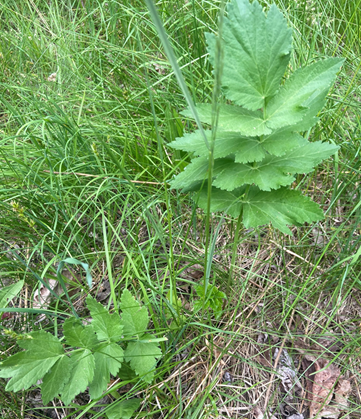
Wild parsnip is an invasive plant native to Europe and Asia that outcompetes native plants and reduces biodiversity. The sap from the stem, leaves, and flowers can increase skin sensitivity to sunlight and cause severe skin irritation, rashes and inflammation. Do not touch.
- Often mistaken for Queen Anne’s lace, cow parsnip, angelica, giant hogweed, Golden Alexander or lovage.
- Its single green stem is less than 5 centimetres thick, grows up to 1.5 metres tall, and is smooth with few hairs.
- Compound leaves are arranged in pairs, with sharply toothed leaflets shaped like a mitten.
- Yellowish green flowers form umbrella-shaped clusters measuring 10 to 20 centimetres across.
How to remove wild parsnip from your property
The safest way to get rid of wild parsnip is to call a professional service. If you must remove it yourself:
- Wear protective clothing including gloves, pants, long sleeves, eye protection, raincoat, and boots.
- Remove flower heads to prevent seeds from growing.
- Dig out as much of the taproot as you can with a sharp shovel or spade.
- Seal it in two layers of plastic garbage bags and leave in sun to dry out, then put it in your grey waste cart. Do not put it in your compost, green cart or bagged yard waste.
- Wash the clothes you wore during removal.
- Watch for any new growth and remove as needed.
- You can also cover dug areas with black plastic to smother new plants. The plastic should be left in place for at least one season to ensure the roots are smothered.
How we manage invasive plants on City property
We use machinery and herbicide to remove giant hogweed, dog-strangling vine, Japanese knotweed, Phragmites and buckthorn from parks and natural areas. Manual removal alone is not always effective. We sometimes use herbicides to minimize disruption to surrounding plants and wildlife and prevent invasive plants from growing back.
The City uses Garlon™ RTU to control buckthorn. Japanese knotweed, dog-strangling vine, Phragmites and giant hogweed are controlled with Roundup WeatherPro ®.
These products are registered for use in Canada and have been tested to ensure minimal risks to human health and the environment. Licensed applicators use targeted application, so we use as little as possible, and protect surrounding plants and wildlife.
Learn more about registered herbicides from Canadian Pest Management Regulatory Agency.
When the City is confident invasive plants are under control, we rehabilitate natural areas using native trees, shrubs and plants.
Help grow Guelph’s urban forest
Learn about tree-planting events, Guelph’s Urban Forest Management Plan, tree bylaw and permits and more at guelph.ca/trees.
